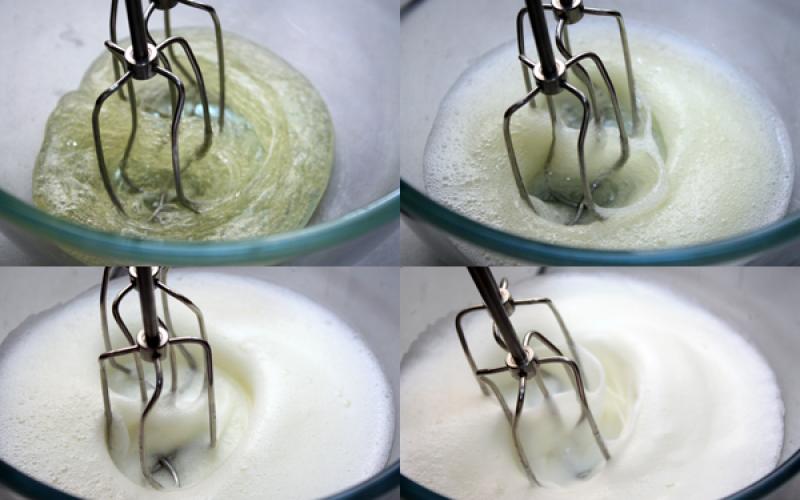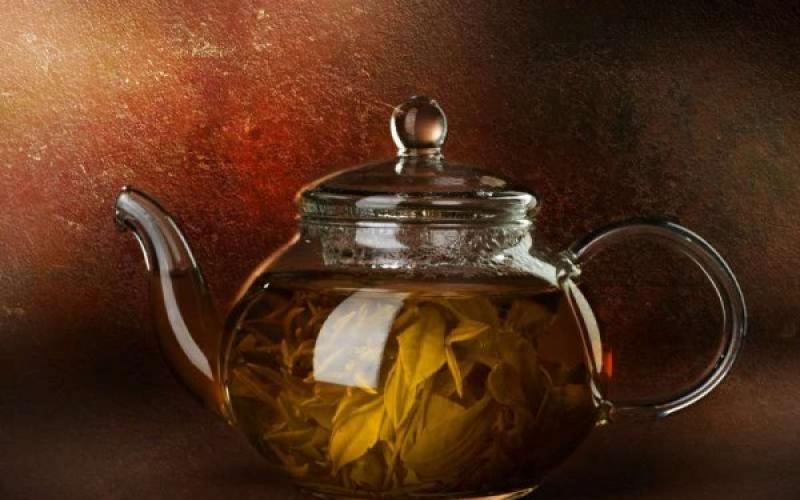Derzhiderevo - Paliurus spina-christi Mill.
Buckthorn family - Rhamnaceae Juss.
Derzhiderevo is a shrub up to 3 m in height, dense, strongly branched. The leaves are alternate, located approximately in 2 rows on the branches, with short petioles, 2-4 cm long, 1.5-3.5 cm wide, wide, obovate, narrowed upwards, with three veins, slightly serrated or entire. Stipules are always changed into spines, one of which is erect and the other is curved backwards. The flowers are bisexual, collected in small false umbrellas. Cup and whisk of 5 leaves, not fused, yellowish green colors. There are also 5 stamens, a pistil of carpels with a 2-3-cell semi-inferior ovary. The fruit is a hemispherical, lignified drupe with 2-3 seeds; the fruit is covered with a leathery semi-lignified, partly woolly disc, yellowish-brown in color, increasing the size of the fruit by 2-3 cm. Seeds are flat, obovate, not opening even after ripening.
Blooms in May-July. Honey plant. Decorative.
Distributed in the Crimea, the Caucasus (all areas), Central Asia. It grows on pebbles along the banks of rivers, in gorges, on dry clayey, gravelly and stony slopes, up to a height of 1500 m above sea level, often in thickets.
Roots, leaves, fruits, bark are used for medicinal purposes.
The plant contains saponins, alkaloids, flavonoids (rutin, hyperin, isoquercitrin), tannins, sucrose.
A decoction of the roots, leaves and fruits is used as a diuretic.
Decoction, infusion of bark and leaves are used for diarrhea, eye diseases. An infusion of seeds is drunk for pulmonary diseases.
AT traditional medicine In Bulgaria, the fruits of derzhidereva are used to "purify the blood" for eczema, as a laxative, against high blood pressure, etc. In high doses, it causes irritation of the digestive canal and kidneys.
The wood is suitable for tanning leather.
Unripe fruits color silk, wool in pink and pink-lilac color, mature - in sandy.
Methods of preparation and use:
1. 1 teaspoon of crushed roots in 2 cups of water, boil for 5-6 minutes, leave for 1 hour, strain. Take 1 tablespoon 3-4 times daily as a diuretic.
2. 1 tablespoon of crushed dry leaves in 2 cups of water, boil for 3-4 minutes, leave for 1 hour, strain. Take 1 tablespoon 3-4 times a day as a diuretic and for diarrhea.
3. 0.5 teaspoon of crushed fruits per 300 ml of boiling water, leave for 2 hours, strain. Take 1 tablespoon 3-4 times daily as a diuretic.
4. 1 tablespoon of chopped bark in 2 cups of boiling water, leave for 2 hours, strain. Take 1-2 tablespoons 3 times a day as an astringent for diarrhea.
Hold-tree-thorny | Paliurus spina christi | Buckthorn. Botanical characteristics of hold-tree-thorny
This plant is also called prickly paliurus. It usually grows on stony soils in western Asia and the Mediterranean countries, but is also found in the Caucasus.
It is a shrub with thorny branches and reaches a height of 2 to 5 meters. It has oval leaves with two stipules that have turned into spines at the base. In wet areas, the plant multiplies so strongly that it forms impenetrable thorny thickets.
Dry fruits with three seeds, surrounded by pterygoid folded appendages.
Hold on - the tree has large quantity thorns, which is why the population uses it to create hedges: they plant a plant around the perimeter instead of building a fence.
From ancient legend it came to us that during the crucifixion of Jesus Christ, a wreath of thorns was woven from the branches of a tree. But there are other authors who believe that this wreath was woven from African jujube (Ziziphus africana).
USED PARTS. Naturally dry fruits are usually harvested in the month of June and dried for a long time in the shade in the open air. After that, infusions and extracts used in the pharmaceutical industry are prepared from the dried fruits of the tree.
ACTIVE SUBSTANCES. The fruits of the plant contain a large number of flavonoids, mainly glucosyl luteolol, which gives the flowers their yellow color. It also contains rutoside.
HEALING PROPERTIES. Preparations made from the tree have a diuretic effect, and also contribute to the excretion of urea and other nitrogenous compounds along with urine.
PRECAUTIONARY MEASURES. To date, long-term testing of preparations of the tree-tree has not revealed any toxic effects on the human body at therapeutic doses, but they should not be used by pregnant women and nursing mothers.
APPLICATION.
1. , urinary tract infections:
- prepare the infusion: pour 30 grams of dried crushed fruits of the plant with a liter of boiling water, leave for 10 minutes. Consume 3-4 cups a day between meals;
- 30% hydroalcoholic extract: 30 drops in a small amount of water before meals three times a day.
If symptoms persist, a doctor should be consulted.
Be healthy!!!
P.S. Dear site visitors! You came to this page hoping to find healing for yourself, for a person close to you. Perhaps you have already found the right recipe.
But before you start cooking medicinal product with a plea, I recommend that you definitely read the prayers below, which it is advisable to rewrite and also read during the entire course of treatment. I sincerely assure you, it helps!
And may the Lord God help you
PRAYER FOR HEALING.
Lord Almighty, Physician of our souls and bodies, humble and exalt, punish and still heal! Visit your servant (name), who is weak, by Your mercy, stretch your muscle, full of healing and healing, and heal him, raise him from his bed and weakness. Forbid the spirit of infirmity, leave from it every ulcer, every disease, every fire and shaking, and if there is sin or lawlessness in it, weaken, leave, forgive Your for the sake of humanity. To her, Lord, spare Thy creation in Christ Jesus, our Lord, blessed be Thou with Him, and with the Most Holy, and Good, and Life-giving Your Spirit, now and ever and forever and ever. Amen.
Derzhiderevo (Paliurus aculeatus)- a shrub of the buckthorn family up to 3 m in height, dense, strongly branched, alternate leaves, located approximately in 2 rows on the branches, with short petioles, 2-4 cm long, 1.5-3.5 cm wide, wide, obovate, narrowed upward , with three veins slightly serrated or entire. Stipules are always changed into spines, one of which is erect and the other is curved backwards.
The flowers are bisexual, collected in small false umbrellas. Cup and corolla of 5 leaves, not fused, yellowish green. There are also 5 stamens, a pistil of carpels with a 2-3-cell semi-inferior ovary. The fruit is a hemispherical, lignified drupe with 2-3 seeds; the fruit is covered with a leathery semi-lignified, partly woolly disc, yellowish-brown in color, increasing the size of the fruit by 2-3 cm. Seeds are flat, obovate, not opening even after ripening. Blooms in May-July. Honey plant. Decorative.
Derzhiderevo is common in the Crimea, the Caucasus (all regions), and Central Asia. It grows on pebbles along the banks of rivers, in gorges, on dry clayey, gravelly and stony slopes, up to a height of 1500 m above sea level, often in thickets.
For therapeutic purposes, the roots, leaves, fruits, and bark of the tree are used.
Derzhiderevo contains saponins, alkaloids, flavonoids (rutin, hyperin, isoquercitrin), tannins, sucrose.
A decoction of the roots, leaves and fruits is used as a diuretic.
Decoction, infusion of bark and leaves are used for diarrhea, eye diseases. An infusion of seeds is drunk for pulmonary diseases.
In the folk medicine of Bulgaria, the fruits of the derzhidereva are used to “cleanse the blood” for eczema, as a laxative, against high blood pressure, etc. In high doses, it causes irritation of the digestive canal and kidneys.
The wood is suitable for tanning leather.
The unripe fruits of the derzhidereva dye silk, wool in pink and pink-lilac color, mature ones - in sandy.
Ways to prepare and use derzhiderev:
- 1 teaspoon of crushed roots of dergitree in 2 cups of water, boil for 5-6 minutes, leave for 1 hour, strain. Take 1 tablespoon 3-4 times daily as a diuretic.
- 1 tablespoon of crushed dry leaves in 2 cups of water, boil for 3-4 minutes, leave for 1 hour, strain. Take 1 tablespoon 3-4 times a day as a diuretic and for diarrhea.
- 0.5 teaspoon of crushed fruits per 300 ml of boiling water, leave for 2 hours, strain. Take 1 tablespoon 3-4 times daily as a diuretic.
- 1 tablespoon chopped bark in 2 cups boiling water, leave for 2 hours, strain. Take 1-2 tablespoons 3 times a day as an astringent for diarrhea.
Hold - tree (Christ's thorns, crown of thorns)
Hold - a tree, or a paliurus of Christ's thorn (Christ's thorns, a crown of thorns). Paliurus spina-christi. It is a deciduous shrub or small tree of the buckthorn family native to the Mediterranean. The plant is common in Southern Europe, Western and Central Asia, in the Crimea, in the Caucasus. In the Crimea, it grows on dry, well-lit rocky slopes, rising to mountains up to 1500 m.
According to legend, it was from this tree that the crown of thorns of Christ was woven - a crown of plant branches with thorns (thorns), which, according to the Gospels, was placed on the head of Jesus Christ by Roman soldiers during His desecration. In memory of this event, the scientific, as well as English-language "Christ's Thorn", or "Jerusalem Thorn" name of the plant is given.
The name itself speaks for itself. Small leaves sit on thin splayed branches; their stipules are turned into strong spines, arranged in twos - one straight, the other hooked. So, you won’t envy those who got into these thickets. This is how a bush looks like a tree. It is believed that a wreath of this plant was put on the head of Christ. The wreath, woven from the branches of a hold-tree, is decorated with the most delicate yellowish flowers, while on the inside it is dotted with the sharpest bidirectional thorns. Paliurus spina-christi spores were found on the shroud. Therefore, they call this shrub Christ's thorns. There are other names: karatyshnik, chizhnik, chizhmyk; among the Crimean Tatars - kara-teken.
The plant "hold-tree" is cultivated for decorative and medicinal purposes. When building landscapes, they are used as hedges. Does well in sandy and clay soils. Can grow in both strongly alkaline and acidic soils. Prefers open or slightly shaded (woodlands) areas. Grows in both well-drained and moist soil. Drought resistant.
The flowers of the tree are bisexual, collected in small false umbrellas. Calyx and corolla of five leaves, unfused, yellowish-green. There are also five stamens, a pistil of carpels with a two-three-celled semi-lower ovary. The fruit is a hemispherical lignified drupe with 2-3 seeds, the fruit is covered with a leathery, semi-lignified, partly woolly disc of yellowish-brown color, increasing the size of the fruit by 2-3 cm. Seeds are flat, obovate, not opening even after ripening. Blooms in May - July. Decorative. Honey plant.
Roots, leaves, fruits, bark are used for medicinal purposes. The plant contains saponins, alkaloids, flavonoids, tannins, sucrose. Fruits are used, the decoction of which has anti-inflammatory, expectorant and antispasmodic effects. It acts on the large intestine like a buckthorn laxative. In folk medicine, the fruits of the tree are used to "purify the blood", for eczema, as a laxative, against high blood pressure, etc. The juice of the fruit will help with cough and stone Bladder. The juice of the fruit removes with phlegm the bad juices that have accumulated in the chest, cleanses it and opens the breath. Helps with animal bites. A decoction or infusion of bark and leaves is used for diarrhea, eye diseases. An infusion of seeds is drunk for pulmonary diseases. In high doses, it causes irritation of the digestive tract and kidneys.
A decoction of the roots, leaves and fruits is used as a diuretic. 1 tsp crushed roots in 2 cups of water, boil for 5 minutes, leave for 1 hour, strain. Take 1 tbsp. 3-4 times a day as a diuretic. 1/2 teaspoon of crushed fruits per 300 ml of boiling water, leave for 2 hours, strain. Take 1 tbsp. 3-4 times a day as a diuretic.
A decoction or infusion of the bark and leaves is used for diarrhea: 1 tbsp. chopped bark in 2 cups boiling water, leave for 2 hours, strain. Take 1-2 tbsp. 3 times a day as an astringent for diarrhea. 1 tbsp crushed dry leaves in 2 cups of water, boil for 3-4 minutes, leave for 1 hour, strain. Take 1 tbsp. 3-4 times a day as a diuretic and for diarrhea.
The wood of the tree is suitable for tanning leather. Unripe fruits color silk, wool in pink and rose-lilac color, and mature ones in sand.
Botanical characteristic
Hold an ordinary tree, translated - Paliurus spina-christi, the second name is the paliurus of Christ's thorn. This representative of the flora is a dense thorny bush with winding branches, its height can vary from one hundred centimeters to two meters.
The leaves of this plant are simple with three veins, they are alternate, their length can reach up to four centimeters, their shape is obovate. Stipules in the form of spines, one of which is slightly bent back, and the other is erect.
Flowers are five-petalled. thorny bush hold the tree has yellowish-green flowers. They are collected in umbellate inflorescences, they are small, up to four millimeters in diameter. The fruit of this plant is dry, indehiscent, it is surrounded by a small wing, not exceeding three centimeters, it is brown-red or bright yellow.
plant propagation
Hold on, an ordinary tree is found mainly in a warm area, in the Caucasus in the Crimea. You can meet him on dry slopes. This representative of the plant kingdom is also used with decorative purpose, it is planted on home gardens and summer cottages as a hedge.
Used part
For medicinal purposes, the ripe fruits of this representative of the flora are used, since they contain some useful components, which are represented by tannins, some alkaloids, and there are also vitamin C.
Collection and preparation of raw materials
In order to harvest the fruits, they must first be collected, and then sorted out, removing damaged specimens. Then they are scattered on a spacious pallet, which is placed in a ventilated room, or it is installed under a canopy on the street. At the same time, it is recommended to turn over the raw materials with high quality every day.
When the fruits lose all moisture and come to a state of dehydration, so to speak, they can be rather loosely laid out in pre-prepared cloth bags, which are stored in a ventilated room.
After a two-year period, dried fruits will lose their medicinal properties and should be discarded. In an expired form, raw materials cannot be used, because instead of the desired positive effect, you can harm the body.
Application hold-tree ordinary
Due to its medicinal properties, this representative of the flora has found its application among folk healers. Various drugs are prepared from this plant, which are used for therapeutic purposes, as they have a disinfectant, expectorant and astringent effect on the body.
For example, a medicinal decoction of these medicinal fruits is used in the presence of a cough, as well as in bronchial asthma, it is also used for hypertension, for digestive disorders, in particular for diarrhea, as well as for some dermatological diseases.
decoction recipe
In order to prepare a medicinal decoction of the common tree, you will need a tablespoon of the dried fruits of this representative of the flora. They should be crushed, for this, use kitchen utensils in the form of a mortar and pestle, after which pour the raw materials into an enameled container.
Then 500 milliliters of boiling water should be poured into the container, and only then it is recommended to put the container on water bath to minimum fire. After about ten minutes, the drug can be removed from the stove. Then, when it reaches room temperature, you need to start filtering it, for this purpose you should use a strainer with a fine mesh.
It is recommended to take a ready-made broth one hundred milliliters up to four times a day, it is advisable to drink the drug before meals. It should be stored only in the refrigerator, and its implementation period expires after five days, after which it cannot be consumed, since it will lose its medicinal properties and will not have the proper effect on the body.
Infusion recipe
You can prepare a medicinal infusion, which will include not only the fruits of the common tree in the amount of 50 g, but also 30 grams of the following herbs: common flax seeds, heart-leaved linden flowers, spring primrose, large plantain, medicinal sage, forest mallow , skolopendrovy leaflet, ephedra two spikelet.
To prepare a medicinal infusion, you will need 30 grams of a mixture of these medicinal herbs, it is recommended to pour them with 500 milliliters of boiling water, after which the drug should be covered and infused for at least two hours.
After the drug is infused, it is necessary to rid it of the cakes present, for this, apply a double layer of gauze, through which strain the liquid into a clean container. After that, it is recommended to store it directly in the refrigerator and no more than three days.
After three days, the drug will lose its medicinal properties and will be unsuitable for further use. It is recommended to use it in the presence of acute bronchitis, one hundred milliliters up to four times a day. You can add a little fresh honey to the infusion, a teaspoon will be enough.
Conclusion
Before using a decoction or infusion that is prepared from the fruits of this representative of the plant kingdom, it is recommended that you first consult with a qualified doctor. And after his approval, proceed to the manufacture of such drugs, without ignoring the medication prescribed by the doctor.







